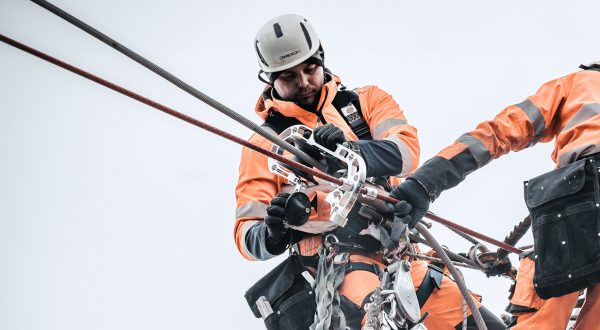Digital technologies and big data can be used to better control energy consumption, a strategic goal of local authorities, and provide greater comfort for citizens.

Artificial intelligence is spreading to the entire urban space and is now used in streetlights, traffic lights, signage, charging stations, and variable message signs. Thousands of sensors have been installed on urban equipment to collect operational data for analysis and use in drawing up scenarios to support decision-making by public authorities.
For example, public lighting accounts for 45% of the local authority’s energy bill. LED (Light-Emitting Diode) technology has already enabled those municipalities that have acquired it to reduce their public lighting electric bill by 75%.
With semi-conducting chips, LED lighting can now be controlled remotely and connected in order to capture data and modulate lighting levels on demand. “Now that the development of low-data-rate networks is making data transmission affordable, sensors will spread fast,” says Thierry Czech, technical and innovation manager at Omexom (VINCI Energies).
Decongesting and regulating traffic
Data analysis also supports road traffic regulation. Remote traffic light management and dynamic parking management now make it possible to reduce urban traffic congestion by 30%.
“We now have solutions that enable us to analyse and cross-compare traffic flow, congestion, and parking data to help local authorities decongest traffic and improve traffic flow. We are testing a tool in Rouen that measures the impact of urban decongestion on pollution levels,” says Thierry Czech.
The electric vehicle challenge
But addressing the urban energy challenge also involves managing electric vehicle charging. There are several unknown parameters to this equation: what will demand be, where will it be generated, and how fast will automobile fleets change? Will local authority investments be commensurate with the goals?
“Only the human brain can determine the use to which technology is put.”
“It takes only 100,000 electric vehicles charging at the same time to cause a blackout on the entire French electricity grid, so there is an obvious need to rapidly plan charging methods and define regulation criteria,” says Thierry Czech.
V2Grid (Vehicle to Grid) technology is a priority topic to be explored. It supports smart electricity grid management by sending energy stored in the vehicle back into the grid when required.
Here, too, data will play a key role by measuring usage, identifying categories of users, adjusting tariffs and helping operators anticipate the risk of thresholds being exceeded. “The human brain is unable to combine and analyse that much data in real time, but only the human brain can determine the use to which technology is put,” says Thierry Czech.
17/05/2018


